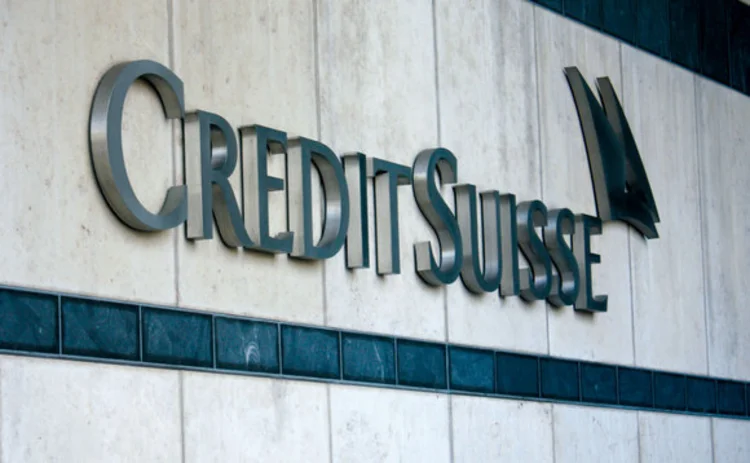
Structured products house of the year: Credit Suisse
Asia Risk Awards 2022

Market sentiment has shifted this year: lacklustre performance in equity markets has seen many investors expand into other asset classes, while rising interest rates has made it possible to develop new principal-protected structures. Credit Suisse, with its broad Asian footprint and multi-asset platform, is well placed to capitalise on these trends.
“With the market running in so many different directions … we have to work that much harder, because we can’t just rely on a few products being automated to bring in revenues. This makes for interesting times,” says Charles Firth, managing director, solution sales, Asia-Pacific.
Capital protection
A year ago, with rates in many jurisdictions close to zero, manufacturing capital-protected products, which typically comprises a zero-coupon bond and a call option on an index or fund, was not possible. This is because issuers had to set aside larger amounts of capital to ensure investors were paid back their principal, leaving insufficient money left over to pay for the options and distribution fees.
This year, things have changed.
“Principal-protected products can now be manufactured in relatively short tenors. One year is just about possible, one-and-a-half years can be done and two years is now extremely common,” says Firth.
One innovative principal-protected product that Credit Suisse launched this year includes a ‘minimum lookback on entry’ feature.
The advantage of this feature is that it allows clients to benefit if the underlying falls over the following months after purchase, which is helpful for investors who are medium-term bullish but short-term expect volatility perhaps with temporary downside, thus reducing any potential buyer’s remorse.
The product works by observing the underlying assets over the first six months of the trade, and then using the lowest of these levels to set the strike for the upside call.
This reduces client concerns about buying the product at the wrong moment in case the market suddenly dips. Thanks to this product, Credit Suisse has been able to pick up a lot of fresh business from clients worried about persistent uncertainty in the market.
Of course, clients do have to give up some of the upside potential, but the give-up tends to be quite limited: typically 20% of the participation rate in a structure where participation rates start at around 150%.
“This is a relatively small give-up for something that adds a lot of peace of mind for investors,” says Firth.
Beyond equities
Last year, client demand for Credit Suisse structured products was overwhelmingly centred on equities, with just 1% coming from other asset classes. This year, the biggest-selling products for Credit Suisse have been interest rate and fund-linked structures.
Capped and floored floating rate instruments, which pay a certain level above a rates benchmark, such as the Secured Overnight Financing Rate, have proved particularly popular. A variation on this theme, a step-up fixed rate coupon, is popular with less sophisticated investors, who may find it difficult to understand floating-rate references.

Credit Suisse has also included some more complex rates structures in its product offering this year, such as steepener trades.
These typically reference some swap rate (such as the 30-year minus two-year rates), allowing clients to take the view that rates are not going to be hiked as quickly as the market is suggesting, or that inflation will not persist for as long as is expected.
Normally a structure is interesting if it can solve just one difficult problem. This was able to solve four different problems, each with increasing level of complexity
Charles Firth, Credit Suisse
Credit Suisse’s success in the product has all been to do with the timing. While these products started to emerge on the Asian market in March, the Swiss bank didn’t feel the time was right to launch its own variation.
“Those trades done in March or April would have had a barrier of around zero, with the view that the spread hasn’t been negative for more than eight days in the past 10 years. But then the spread did promptly become negative and has been mostly negative ever since. As a result, those early trades will not have performed well,” says Firth.
Within a few months, however, the situation was different.
“Now there are two schools of thought: those that think rates will continue to go up steeply and those that think, because of the fear of recession or inflation being less persistent than anticipated, rates may not go up so fast. These divergent views mean there is value in steepeners for investors with the latter view,” says Firth.
Complex innovation
Beyond those structures described above, there are a few products that really stood out this year for the level of complexity and innovation that they exhibited.
One of these is a Japanese structured fund that allows retail investors to gain access to private equity (PE) and, according to Firth, was the first time that something like this has been achieved.
“Normally a structure is interesting if it can solve just one difficult problem. This was able to solve four different problems, each with increasing level of complexity,” says Firth.
The first problem was how to deal with the regular capital calls that PE funds periodically demand of investors, whereas investors in structured notes prefer to avoid credit exposure to the end investor. The second problem was how to make the fund public: under Japanese rules the proportion of liquid assets in a public fund must be at least 85%. The third difficulty was to improve the tax efficiency of PE investment. And the final problem, related to all of the others, was how to turn an essentially illiquid PE investment into a more liquid one.
The first problem was resolved by asking the investor to fund the product upfront. However, this has to be done by channelling the pre-funding through a liquidity management product, in order to avoid diluting the overall yield too much.
The other problems were solved by wrapping the note into a special purpose vehicle and then entering into a liquidity agreement with a liquidity provider.
“By solving all these problems we were able to get this product off the ground, and so far it has been very successful,” says Firth. “This was really complicated stuff. In particular, how to make illiquid investments liquid is top-end difficult and simply hasn’t been done in this context before.”
Only users who have a paid subscription or are part of a corporate subscription are able to print or copy content.
To access these options, along with all other subscription benefits, please contact info@risk.net or view our subscription options here: http://subscriptions.risk.net/subscribe
You are currently unable to print this content. Please contact info@risk.net to find out more.
You are currently unable to copy this content. Please contact info@risk.net to find out more.
Copyright Infopro Digital Limited. All rights reserved.
You may share this content using our article tools. Printing this content is for the sole use of the Authorised User (named subscriber), as outlined in our terms and conditions - https://www.infopro-insight.com/terms-conditions/insight-subscriptions/
If you would like to purchase additional rights please email info@risk.net
Copyright Infopro Digital Limited. All rights reserved.
You may share this content using our article tools. Copying this content is for the sole use of the Authorised User (named subscriber), as outlined in our terms and conditions - https://www.infopro-insight.com/terms-conditions/insight-subscriptions/
If you would like to purchase additional rights please email info@risk.net
More on Awards
Joining the dots: banks leverage tech advancements for the future of regulatory reporting
The continued evolution of regulatory frameworks is creating mounting challenges for capital markets firms in achieving comprehensive and cost-effectiveawa compliance reporting. Regnology discusses how firms are starting to use a synthesis of emerging…
Markets Technology Awards 2024 winners' review
Vendors spy opportunity in demystifying and democratising – opening up markets and methods to new users
Derivatives house of the year: JP Morgan
Risk Awards 2024: Response to regional banking crisis went far beyond First Republic
Risk Awards 2024: The winners
JP Morgan wins derivatives house, lifetime award for El Karoui, Barclays wins rates
Best product for capital markets: Murex
Asia Risk Awards 2023
Technology vendor of the year: Murex
Asia Risk Awards 2023
Best structured products support system: Murex
Asia Risk Awards 2023
Energy Risk Asia Awards 2023: the winners
Winning firms demonstrate resiliency and robust risk management amid testing times
Most read
- Revealed: the three EU banks applying for IMA approval
- Industry urges focus on initial margin instead of intraday VM
- Top 10 operational risks for 2024







